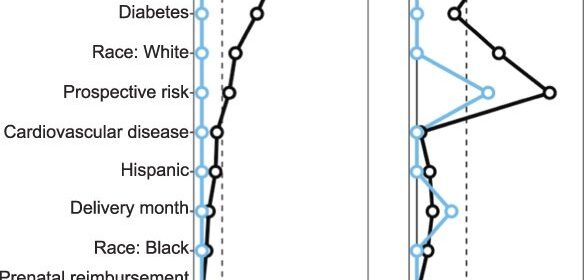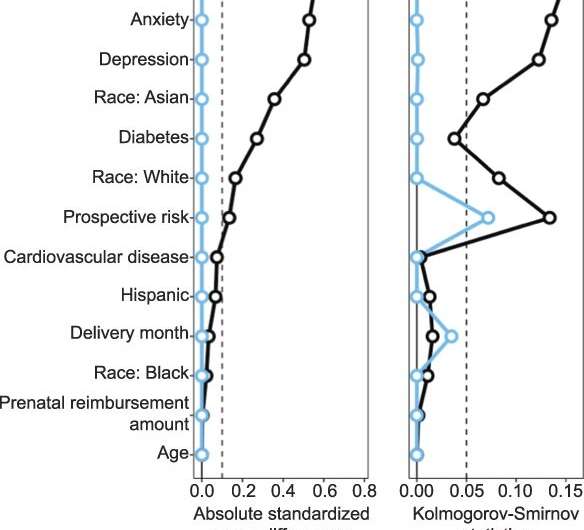Remote blood pressure monitoring may prevent postpartum issues


New mothers with high blood pressure who participated in a post-partum remote blood pressure monitoring program were less likely to have post-partum complications, hospitalizations, and incurred less health care costs in the six months after delivery compared to mothers with high blood pressure who did not participate, according to a multi-year study from the Perelman School of Medicine at the University of Pennsylvania.
The results, which spanned four years of data, were published last week in the journal Obstetrics & Gynecology.
Heart Safe Motherhood is a two-way text message-based program created and studied at Penn Medicine, which makes blood pressure monitoring after giving birth more convenient and links patients directly with their care teams from home. In the United States, preeclampsia, a high blood pressure condition, occurs during 1 in 25 pregnancies, and high blood pressure can continue or develop after delivery.
While patients with preeclampsia, should have close blood pressure follow-up appointments after birth, many patients are unable to attend their recommended appointments due to schedule conflicts, childcare issues, or their babies’ appointments.
Patients who participate in the program receive twice-daily reminders to check their blood pressure and then send the results directly to their care team via text message through this program. If clinicians note any issues, they can quickly take action to provide care, including making changes to their medication or coming into the office for a visit, or, in more serious situations, going to the emergency department.
“Our previous work showed that Heart Safe Motherhood made important blood pressure monitoring easier and eliminated racial disparities in obtaining blood pressures in the two weeks after giving birth,” said study author Adi Hirshberg, MD, director of Obstetrical Services at the Hospital of the University of Pennsylvania, who along with, senior author of this study, Sindhu Srinivas, MD, a professor of Obstetrics and Gynecology at Penn, developed Heart Safe Motherhood.
“What this study really solidified is that the benefits continue long-term. Close but remote tracking of blood pressure during this short yet pivotal time led to healthier moms months later.”
In this study, the researchers tracked multiple aspects of participants’ health over one year following childbirth. They analyzed patients who did and did not participate in the program, tracking any instances of conditions or events tied to high blood pressure. Those include heart attack, stroke, a blood clotting condition called disseminated intravascular coagulation (DIC), eclampsia, pulmonary edema, Hemolysis Elevated Liver Enzymes Low Platelets (HELLP) syndrome, and cardiomyopathy.
Every condition occurred less frequently in the group that participated in Heart Safe Motherhood. Additionally, while the Heart Safe Motherhood group had more cardiology visits, they had fewer emergency room visits, hospitalizations, and total health care costs during the six-month period, averaging a savings of about $100 per patient.
“Since the program allows for more frequent and purposeful blood pressure follow up in the 10 days immediately following discharge after birth, my colleagues and I believe that participants in the Heart Safe Motherhood group received timely treatment for their high blood pressures and any other necessary care,” said Srinivas. “Timely intervention, especially in those early postpartum days with this high-risk population, is key to reducing adverse outcomes.”
Srinivas and her Penn team believe that Heart Safe Motherhood can play a role in eliminating the inequities in maternal outcomes of non-white and white patients. Non-white patients are more likely to suffer adverse health events and more likely to have to miss medical appointments directly following delivery.
“While a program like Heart Safe Motherhood is good for everyone, we know that non-white, and especially Black patients, are more likely to have serious complications and even die after giving birth compared to their white peers,” said Srinivas. “Programs like this can help cut through any structural racism and socio-economic factors to improve health care access for all patients.”
More information:
Adi Hirshberg et al, Association of a Remote Blood Pressure Monitoring Program With Postpartum Adverse Outcomes, Obstetrics & Gynecology (2023). DOI: 10.1097/AOG.0000000000005197. journals.lww.com/greenjournal/ … _Monitoring.750.aspx
Journal information:
Obstetrics & Gynecology
Source: Read Full Article